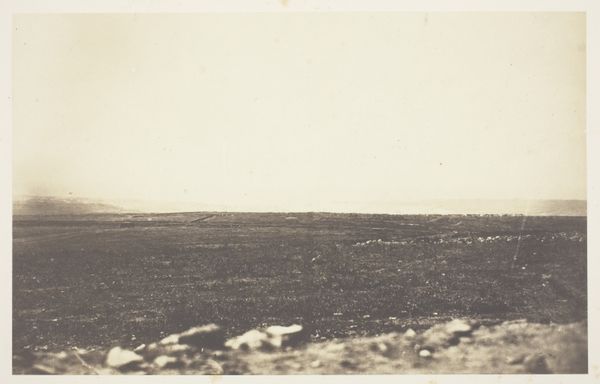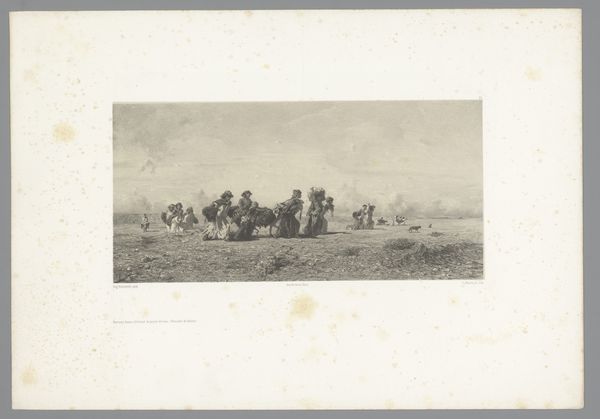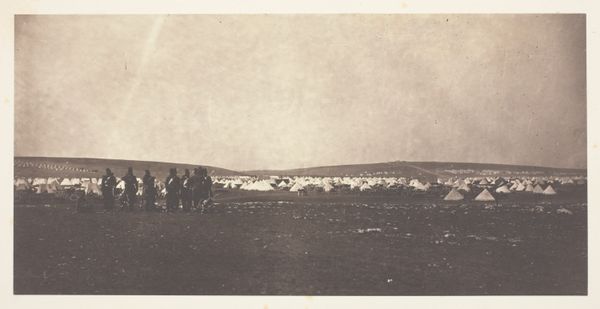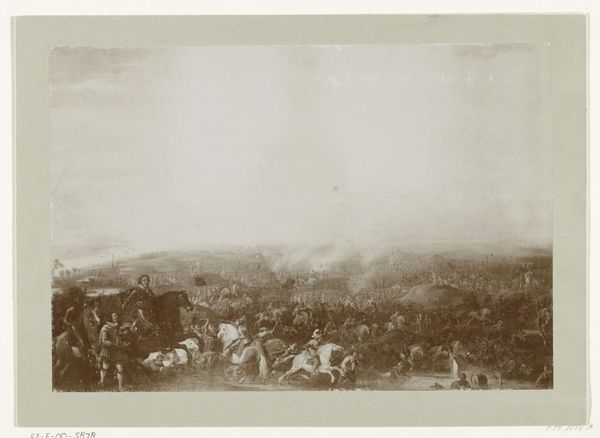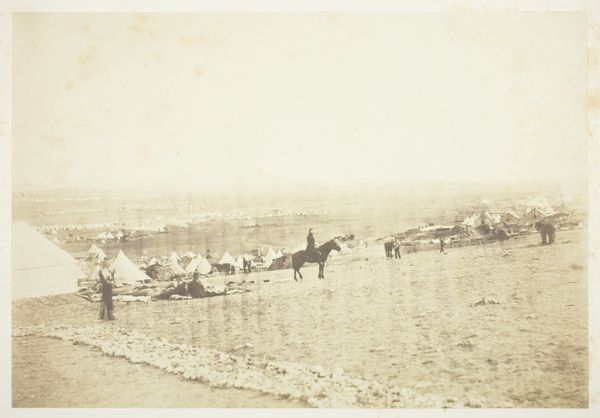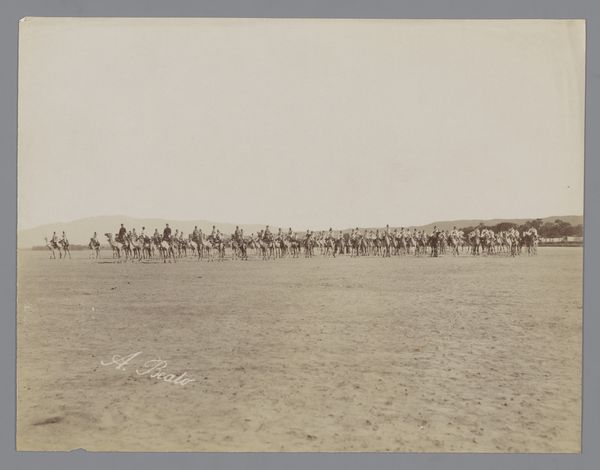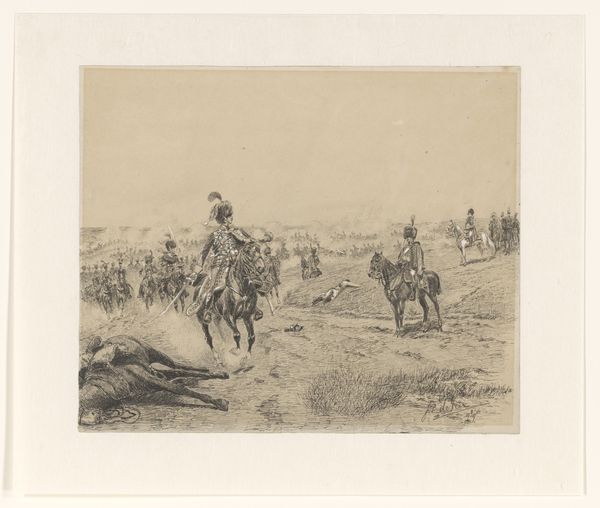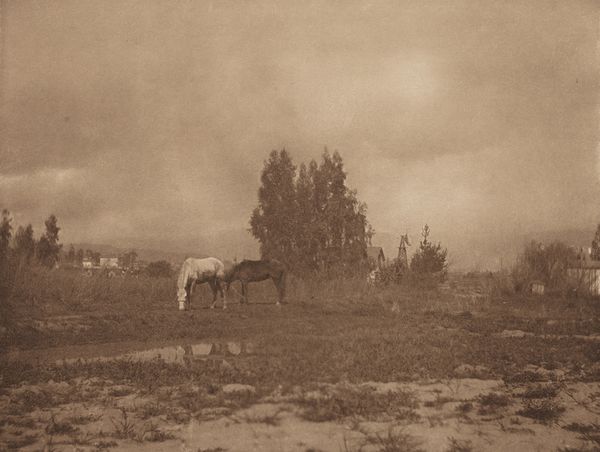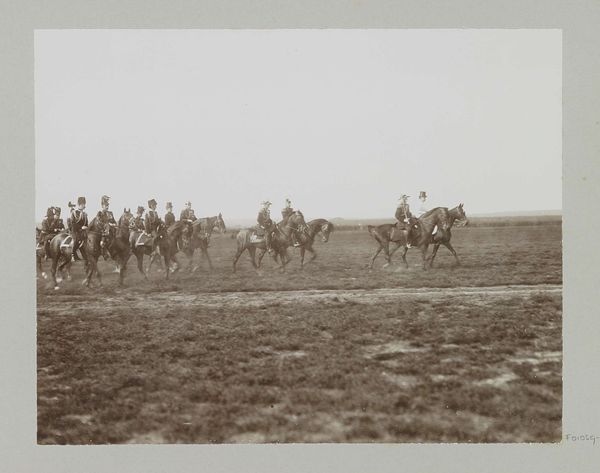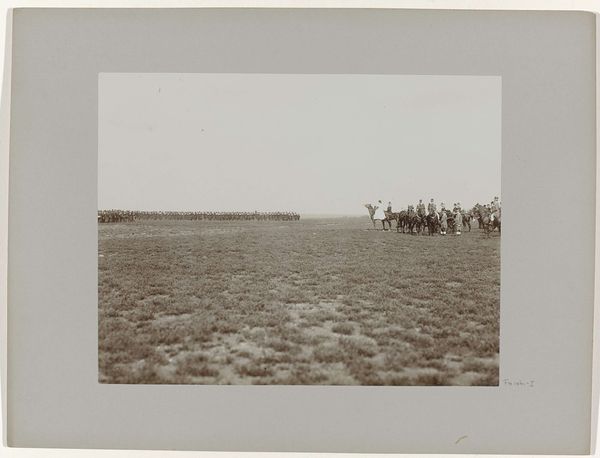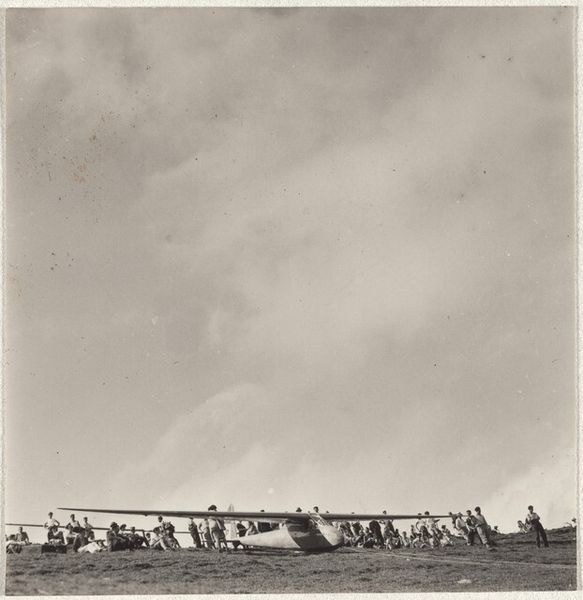
Chalons Encampment: Maneuvers on October 3 (Camp de Châlons: manoeuvres du 3 octobre) 1857
0:00
0:00
Dimensions: 27 × 36 cm
Copyright: Public Domain
Curator: Let's turn our attention to Gustave Le Gray's 1857 photograph, "Chalons Encampment: Maneuvers on October 3," a gelatin silver print currently residing here at the Art Institute of Chicago. Editor: My immediate impression is one of eerie stillness. The vast landscape is washed in soft grays, almost monochromatic, and there’s a curious tension between the figures on the horizon and the shadowy foreground. Curator: Indeed. Le Gray, renowned for his seascapes, here captures the military maneuvers at Camp de Chalons. The camp itself was a powerful tool used by Napoleon III to demonstrate France’s military strength and modernize military training and technology. He captured the zeitgeist through careful image crafting. Editor: Which is what I find so compelling. Beyond the historical record, the composition resonates on a deeper level. There is a hierarchy being played out through image construction. Who is commanding us? I see themes around state power, control, masculinity, all through the muted lens of 19th-century romanticism. Curator: Absolutely, and consider the technical mastery. Le Gray famously combined multiple negatives to achieve the dramatic sky, creating a hyper-realistic yet subtly manipulated representation of reality that suited the propaganda of the time. These details of processing underscore photography’s ability to be both truthful and highly constructed, further expanding our narrative understanding. Editor: And even on a material level—the silver print itself speaks volumes. Its archival quality allows these political intentions to reverberate today, begging the question: Whose stories are we preserving, and what narratives do they reinforce? Curator: A pertinent question. The public role of art becomes abundantly clear when viewed through a lens of military campaigns and power displays such as those on display at Camp de Chalons. The photograph's purpose was always to display Napoleon III’s agenda, shaping not only local perception but also the international political theater. Editor: So it moves beyond romantic landscape or simple documentation. It reveals uncomfortable intersections between power, artistry, and control that continue to inform and haunt our present day. Curator: A chilling reflection on an ambitious photograph.
Comments
No comments
Be the first to comment and join the conversation on the ultimate creative platform.

